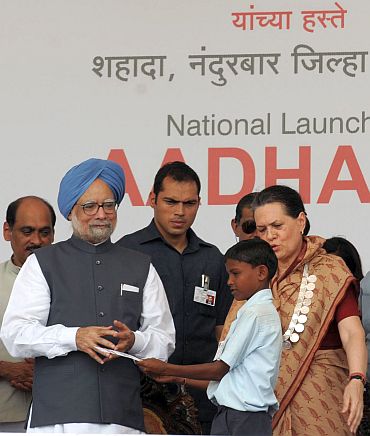
Tembhali village of Maharashtra's Nandurbar district earned the prestigious spot on the Indian map on September 29, 2010 where Prime Minister Dr Manmohan Singh and Congress chief Sonia Gandhi initiated the process of distributing the much talked about Unique Identification Number to villagers.
The Unique Identification Database Authority of India has been under the media glare ever since its launch and ever since former Infosys honcho Nandan Nilekani took over the reins as its chairman.
Now that the first set of UID numbers has been issued, there still remains a lot of curiosity about this intriguing project. here is an attempt to delve into the complex yet interesting programme called UID. . . .
Source: https://www.scribd.com/doc/32320228/This-is-how-your-UID-number-will-look-like; Agencies

What is Unique ID?
Unique Identification is merely a string assigned to an entity that identifies the entity uniquely. Every person residing in India will soon have a UID.
Biometric identification system and checks would be used to ensure that each individual is assigned one and only UID and the process of generating a new UID would ensure that duplicates are not issued as valid UID numbers.
. . .
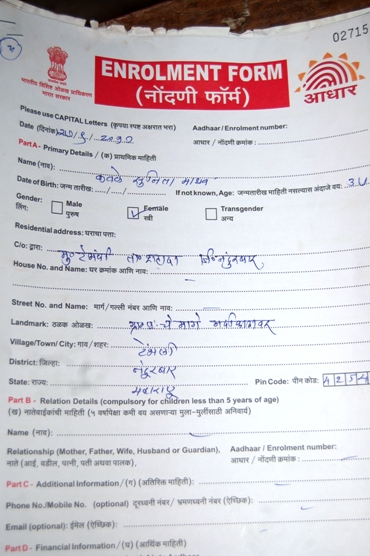
What is the utility of UID?
The programme to provide UID is an opportunity for India to design a 21st century system of identification that could be a significant improvement over the 19th and 20th century systems in use in developed countries like United States of America and Italy.
The tradeoffs made in designing this system will continue to have a long-term impact. A good design for UID could last us for centuries without changes whereas suboptimal choices may dilute or even negate some of the presumed benefits and create future problems.
In an interview to rediff.com in August last year, Unique Identification Database Authority of India chairman Nandan Nilekani said that the unique identification numbers will take into account the database of the poor and the marginalised people, mostly living in the rural areas.
The numbers will, for the first time, provide an identity to those who need it the most. The project has great potential as it sets out to take within its purview the not-so-privileged residents of India.
. . .
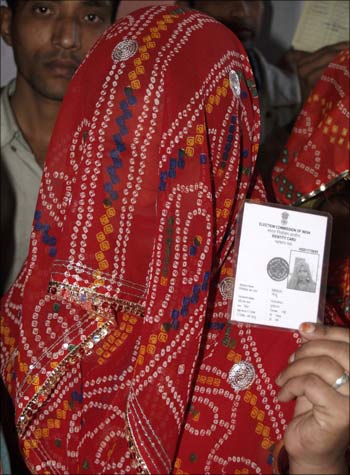
Some salient features:
. . .

How to get it?
To get a UID number, residents will have to go to the nearest Aadhaar enrollment camp, details of which will be published in the local media.
Residents will have to carry along certain documents, mentioned in the advertisement. Residents will also be photographed and have their fingerprints and iris scanned.
The Aadhaar numbers will be issued within 20-30 days.
. . .

Privacy issues
A great deal has been written about the privacy implications of national ID cards in various countries. And UID too has raised similar concerns.
However, it must be remembered that the UID programme does not issue a smartcard or any type of card or mandate any machine-readable format such as a barcode or RFID.
Even if a barcode were used on the UID letter delivered to the citizen, it would merely encode the UID itself, and not personal information pertaining to the citizen.
In the rediff interview, Nilekani himself had asserted that the UID scheme would not affect civil liberty.
The UID will be used just for verifying someone's identity, he had said.
It would be a 'yes', 'no' kind of an exercise. If someone's identity needs to be verified, only then these numbers will come in handy.
It will just authenticate certain facts about an individual. It will only verify if a certain person's claim for identity is true or not.
. . .

An example of UID's utility
This form of authentication can be embedded into various forms of services.
For instance, with these numbers, a pensioner can go to a kirana store (a business partner of UIDAI), and can find out the details about the pension due to him by having his biometrics checked at the micro automated teller machine available with the storeowner.
If, for instance, Rs 300 is due to him, the kirana store owner will pay him the same amount from his drawer and have the same Rs 300 credited to his bank account.
The UIDAI had discussed with the Reserve Bank of India for preparing the roadmap for financial inclusion with help of micro-ATMs.
. . .

Process for de-duplication
One of the key features of the UID system is ensuring uniqueness in issuing the UID number.
This means that each resident can get one and only one UID number and conversely the UID number can be used by one resident alone.
The only way to ensure uniqueness with a high degree of accuracy is by the use of biometrics.
Biometrics are physical markers of an individual that are unique to an individual such as fingerprints, iris patterns, face structure etc.
Since biometric information contain no ordering and hence cannot be indexed like text based information, when a resident applies for a UID with his/her fingerprints, iris and photo of face, these biometrics have to be compared against the entire UID database (existing residents with UIDs) to ensure that this new applicant is indeed unique and has not already been allotted a UID (even under a different name, address, etc).
. . .

Can UIDs be deactivated?
When a person dies, eventually one would see a need to de-activate the UID associated with the person.
One simple way to deal with that is to flag UID record as inactive once one confirms the death.
In a country of a billion people, updating UID records based on the death register is not easy, especially since a large number of cases of death are not reported and moreover the registration of births and deaths is maintained at local distributed levels across the country making it difficult to update them at a central UID system.
One way to ensure that UIDs are not misused by others after a person's death is to inactivate the UID if it has not been used say in 10 years (timeout can be changed).
Using the lack of activity as being an indicator of being deceased is also not without its pitfalls. In the case that a UID in inactivated of a person who has simply not authenticated him- self/herself in a long time, s/he can simply activate their UID by a simple re-activation procedure that involves authentication.
. . .
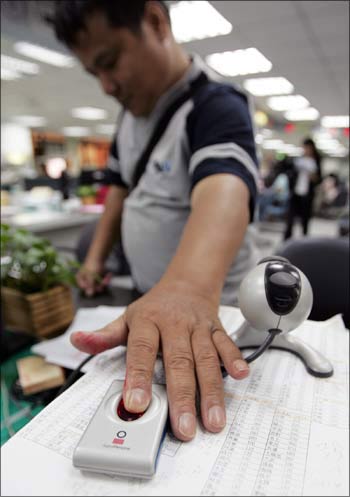
Can lost UID numbers be recovered?
When a resident loses his/her UID number (and the associated UID letter) a process is needed to recover the UID number.
This requires a 'identity check' which involves capturing the resident's biometric and comparing it against the entire UID database in order to locate the UID number of the resident -- this is the same 1:N check that is undertaken during initial UID enrolment.
Since this is an expensive compute intensive operation, the UID system needs to discourage repeated and frivolous applications of lost UID number -- perhaps through a fee for the UID recovery service.
One should set-up a process to change some of the primary information, such as name change, change of primary residence based on the same KYR (know your resident) verification processes that was used for issuing a UID.
. . .
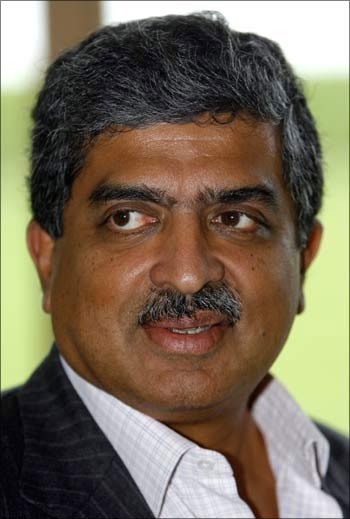
What are the types of identifiers?
Several types of identifiers that are provided by different government and private agencies.
Examples are driver license, ration card, election photo identity card, Public Account Number, passport, National Rural Employment Guarantee Act job card etc.
Examples of identifiers that are used for financial transactions include bank account, post office account numbers etc.
Thirdly there are identifiers meant for communication such as mobile numbers, landline phone, email addresses etc.
While the above identifiers of an individual are relevant in specific sectors such as finance, health, communication etc, the UID is a pure identifier which is not tied to any particular sector or application and this abstract quality of the UID has distinct benefit in delivering cross sectoral benefits.
. . .

Challenges faced
Designing a Unique Identity Number for a population of more than a billion plus poses incredible management and technical challenges.
One needs to carefully plan the format, namely the structure and the length of the string as well as the method of issuing so as not to run out of available numbers to assign at some future date.
Surprisingly, in the past, there have been several instances of unique numbering systems that had to be changed at a great cost after being in use for several years.
The two main reasons have been 1) unanticipated growth (and types) of objects to which UIDs are assigned and 2) introduction of structure within the UID format that wastes large parts of the available space of UID values.